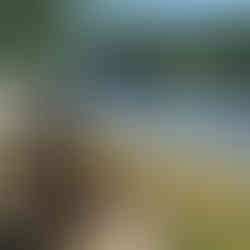The destruction of Wild Salmon. Who or what’s blame?
- Ian Gordon
- Dec 10, 2019
- 4 min read
The Destruction of Wild Atlantic Salmon. By, Hugh Man.

1. Finding their main feeding grounds off Greenland in the late 1950s1958 Greenland catch was 2 tonnes, but by 1965, due to a change in fishing method (from long lining, baiting hooks, to drift netting, monofilament nets) it was 1400 tonnes. 2. The catch in Greenland, never again would reach this level, and, due to overfishing with unsustainable methods, by 1992, no more than 40 tonnes were caught. The biomass of salmon in this hugely important feeding area had shrunk to now less than 5% of those levels seen in the late 1950s And 1960s
3. 1968 saw UDN kill a great many salmon in their home rivers. This speeded up the demise of the salmon, as the rivers never again produced the number of juvenile fish needed to feed the growing number of predators feeding on them; although at this time few noticed, because "visually", there appeared to be enough. But those two events, over netting in Greenland and UDN, were the main catalysts for the decline.
4. Late 1950s, Scotland accepts overfishing with drift nets is having a huge negative impact on salmon stocks and bans their use. This is the first government action to halt the decline.
How have we managed the decline?
1. Unfortunately it was the 1980s before the affects of the decline became visibly apparent in our rivers through a lack of juvenile fish. 2.The mid - late 1980s saw science being used on nearly all Scottish rivers. Juvenile surveys began in the mid 1990s but lacked structure and fish counters were primitive, both leading to very poor unreliable data.
3. Scientists have no long term (pre 1968) benchmark to provide a long term measure with regard juvenile output of our rivers, so make assumptions based present data collection.
4. Scientists finally realise juvenile populations are not as they should be and spend huge amounts reinstating habitat lost to fish above man made dams and culverts. Unfortunately this comes all too late.
5. Numbers of adult fish caught to rod and line remain stable throughout this period of overall decline, leading scientists and decision makers to think, alls well, the final oversight, due mainly to the lack of a good working relationship between Ghllies and scientists/fishery managers. A great shame.
6. Not until catches fall off a cliff do they realise they got this wrong too. Failure to utilise, or take seriously, the knowledge of those working long term on our rivers leads to this extremely costly oversight.
Predation -
Seal population increases from 5000 at the turn of the 20th century, to 300,000+ now. The, abnormally low number (5000) was due to, at that time, Britain being a Whaling nation. Goosanders - Sawbill duck. Non native bird, arrives in the UK for the first time in the 1880s. Their number increase, feeding on "excess" (until the late 1960s) Juvenile salmon produced by our rivers. However, the population of an estimated 20 - 30k breeding pairs are now obviously having a much bigger impact on a hugely depleted output of juvenile salmon.
Physical changes to our rivers
Water abstraction (on the upper part of specific river systems) and change in land use (forestry and farming drainage) between 1950 and 1990 change the geomorphology and hydrology of our rivers, all of which are factors in less juvenile production.
Conclusions -
Many would love to blame "Global Warming" and in doing so, deflect the main reasons for the decline away from man and open up a new field of endless research. Having studied this fish more than most over the past 40 years, there is no doubt in my mind that those things listed above are the reason. Fluctuating ocean temperatures and their affect on food for the salmon have always been there and are the main reason for abundance or not. In short -
1. Unsustainable fishing, using overly efficient nets and methodology. 2. A poor understanding of stock levels both in fresh and salt water.
3. The inability to properly manage predators.
4. Changes to our river systems - Drainage, farming, forestry and industry (dams). increase in people. Water abstraction.
5. An unregulated Aquaculture industry.
This is what has led the Wild Atlantic Salmon to the brink here in the UK. Yet another species/resource, destroyed by mans ignorance, apathy and greed.
To those reliant on the annual return of Salmon in Scotland the decline is followed by a breakdown in the socioeconomic structure provided to Scotland
by the King of Fish, prompting yet another review, which, like those before it, due to poor advice and science, fail to recognise the enormity of the problem.
So here we are - what happens now?
My guess is everyone will bury their heads in the sand, follow that age old policy of "Hope"! Hope it will get better, when if they just took a look outside the bubble, they would realise there is no hope remaining because the population has finally reached the brink. Years of mismanagement have come home to roost! After a valiant 50 year battle, the "King" has finally lost his crown!
Those were my thoughts written in 2014. Obviously the main problems have not changed, the only difference is, we now now have more reliable data to back those facts up, and, via an alliance of the four major angling organisations (The missing salmon alliance), are now using this information to influence political decision makers to finally try and help this national treasure. We can only cross our fingers and HOPE!




















Comments